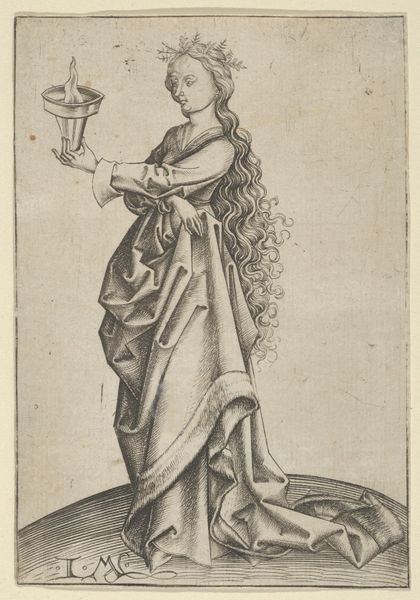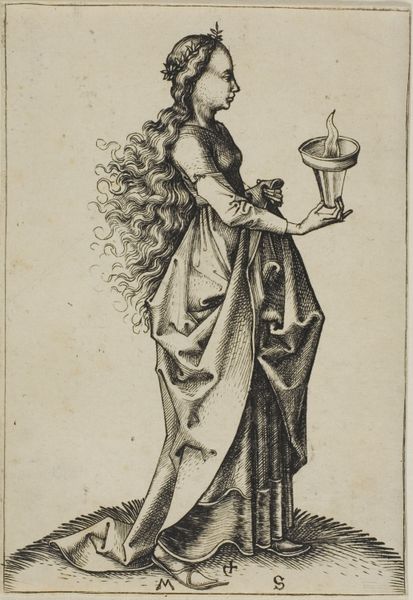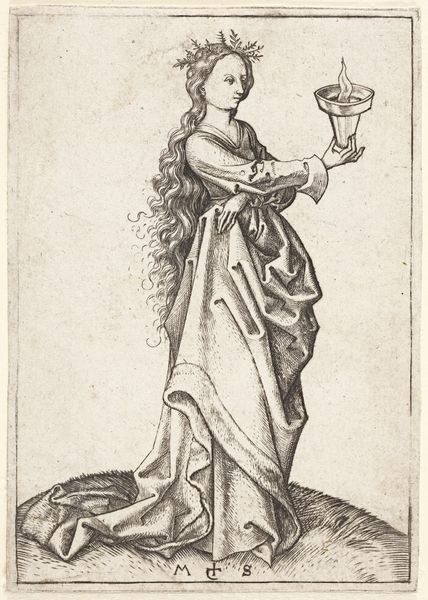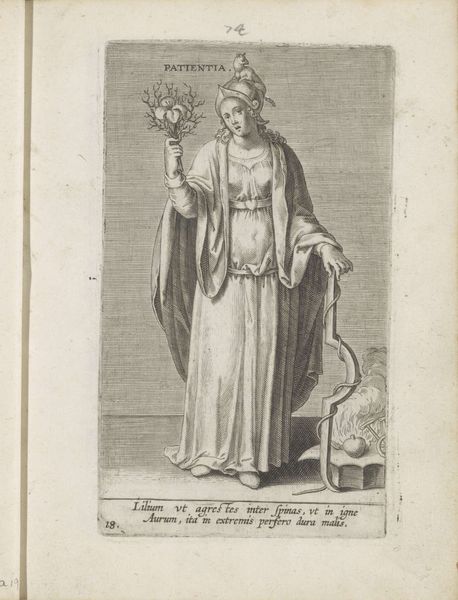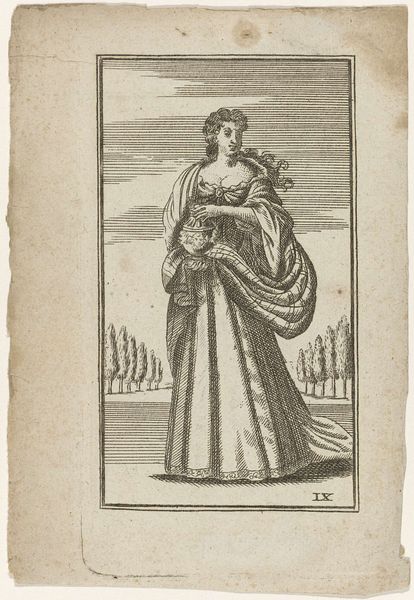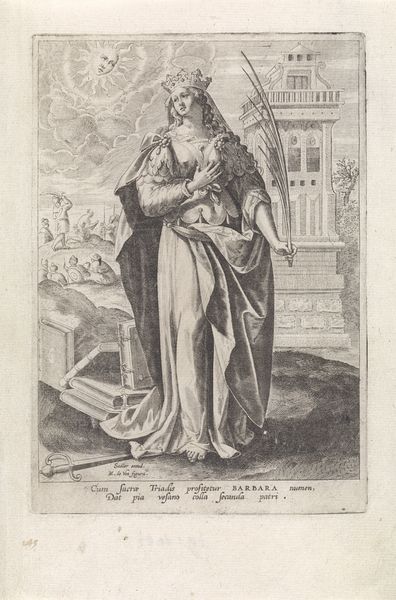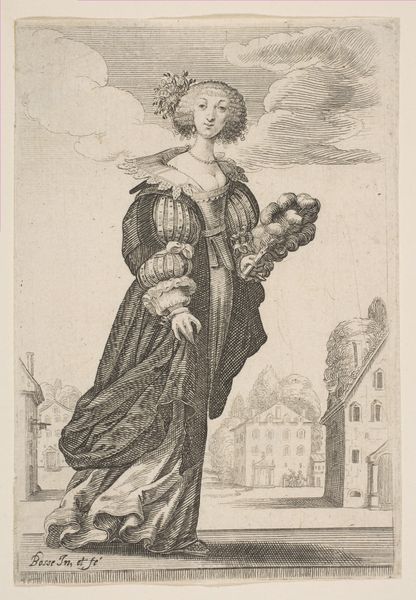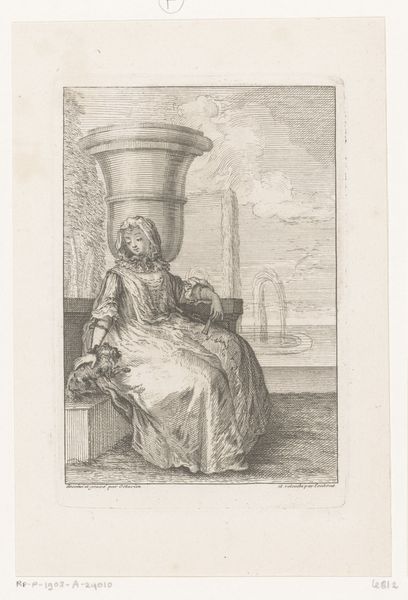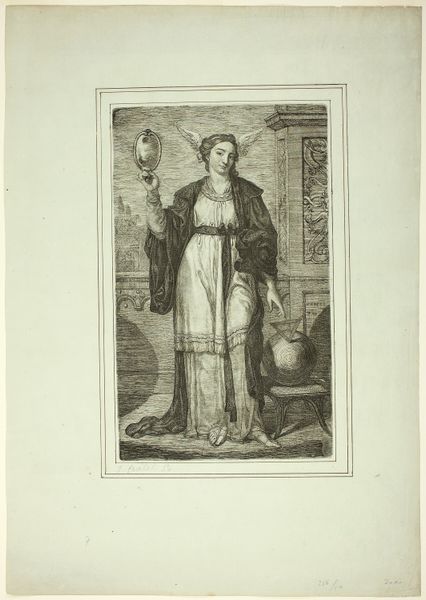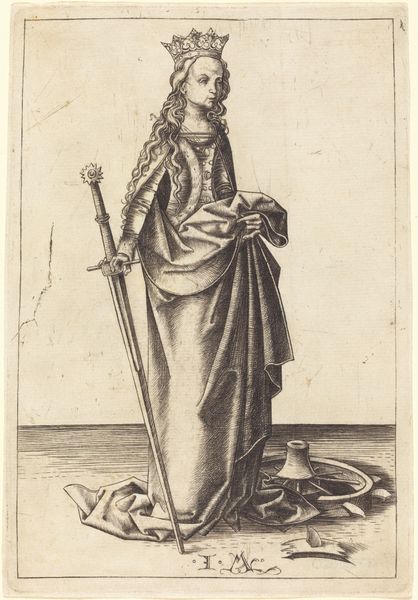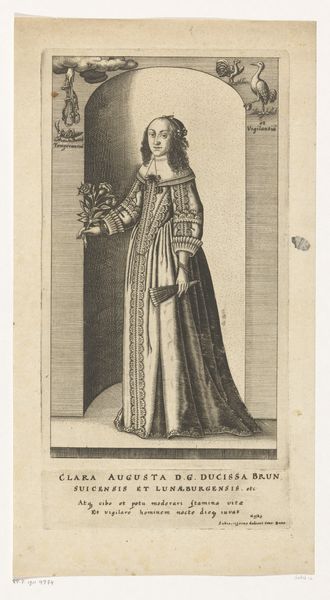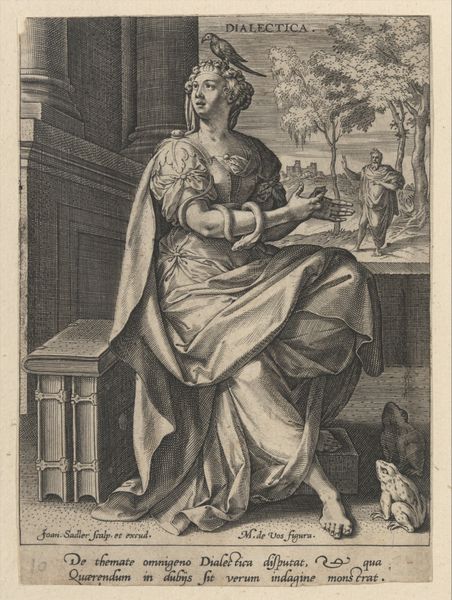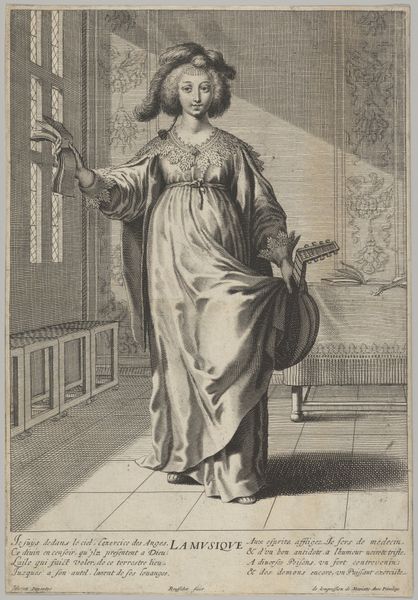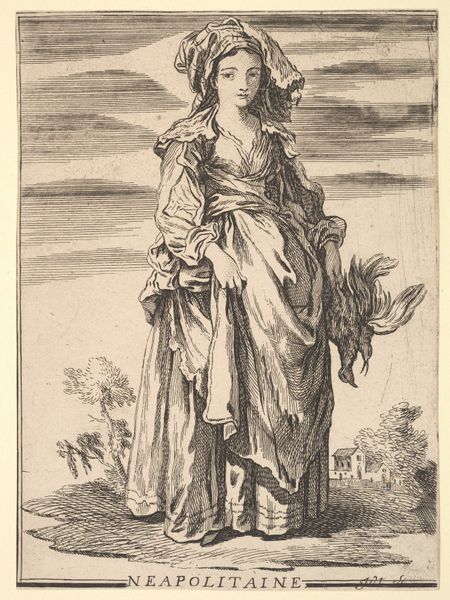
drawing, print, engraving
#
portrait
#
drawing
# print
#
figuration
#
history-painting
#
engraving
Dimensions: Plate: 7 3/4 × 5 1/16 in. (19.7 × 12.8 cm) Sheet: 8 3/16 × 5 5/8 in. (20.8 × 14.3 cm)
Copyright: Public Domain
Editor: So, here we have “Woman Holding a Chalice,” an engraving made sometime between 1750 and 1900 and currently housed at the Met. I’m really struck by the formality of the figure, she feels almost… staged? How do you interpret this work? Curator: Considering this piece in its historical context, it’s useful to analyze how images like this functioned within the societal structures of its time. Prints, like this engraving, played a critical role in disseminating images and ideas. It wasn’t simply about aesthetic appreciation; it was a form of communication deeply entwined with power and representation. Editor: Communication, okay, I see that. So, what’s being communicated here? Is it just about portraying a noblewoman? Curator: It’s more complex than that. Ask yourself: what does the chalice symbolize? Who controlled the narratives around religious symbols and figures in this period? How might this image reinforce or challenge those narratives? It’s not only about portraying the woman, but also about positioning her – and the ideals she represents – within a larger socio-political framework. Editor: So you are saying it’s less about this one woman’s portrait and more about the image as a political statement? Curator: Precisely! The visual language - her garments, the chalice, her posture - contributes to a carefully constructed persona intended to evoke certain responses in its viewers. We can also question who would be viewing this. Who had access to prints like these, and what was the impact? It allows us to understand this piece less as an isolated artwork, but more as an active agent within historical discourses. Editor: That definitely reframes how I see it. I was initially caught up in the detail, but I understand better that this work existed to persuade, or convey power, in some way. Curator: Indeed. And the study of such pieces enhances our ability to consider the role and effect of imagery in contemporary society, as well.
Comments
No comments
Be the first to comment and join the conversation on the ultimate creative platform.
